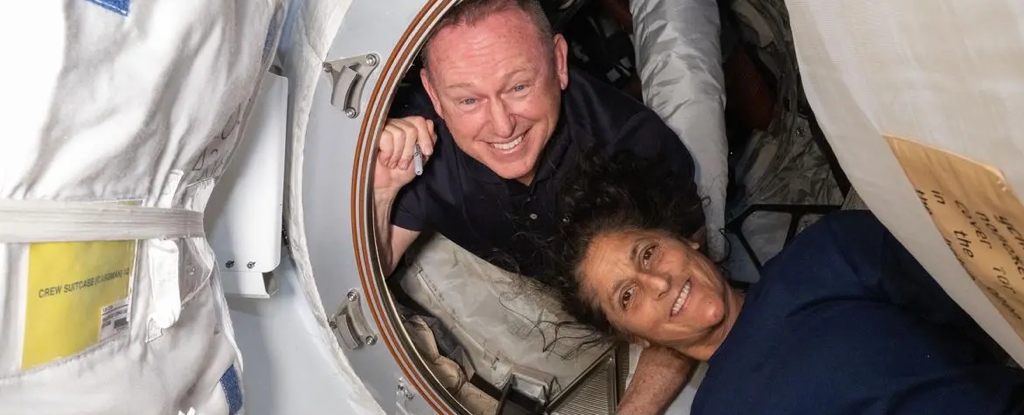Two US astronauts who arrived at the International Space Station aboard Boeing’s Starliner will have to stay six more months and return home with rival SpaceX, NASA said Saturday, in a fresh public relations blow to the crisis-hit aviation giant.
The return of Barry “Butch” Wilmore and Sunita “Suni” Williams had already been delayed for weeks by thruster malfunctions of the Boeing spacecraft, and NASA administrator Bill Nelson announced they will return to Earth in February, while Starliner will return uncrewed.
“Space flight is risky even at its safest and even at its most routine,” Nelson told reporters. “A test flight, by nature, is neither safe, nor routine.”
He said the decision to keep the astronauts on the ISS and return the Starliner uncrewed “is the result of our commitment to safety,” adding, “Our core value is safety.”
The new approach will allow the space agency and Boeing to continue gathering data on Starliner during its homeward flight in early September “while also not accepting more risk than necessary for its crew,” NASA said in a statement.
SpaceX echoed that phrase in a post by its president, Gwynne Shotwell, on social media platform X.
The development creates yet another headache for Boeing, as the two astronauts will have to spend a total of eight months in orbit, not eight days as originally planned.
Officials have said the astronauts on the ISS have plenty of supplies, and are trained for extended stays.
But Nelson said NASA had not lost confidence in Boeing and plans to continue working with it so the space agency will have two vehicles capable of ferrying astronauts to and from the ISS.
He said he was “100 percent sure Boeing will launch Starliner again with a crew on board.”
Return on hold
After years of delays, Starliner finally lifted off on June 5 carrying the two veteran astronauts to the ISS.
But a day later, as Starliner was approaching the space station, “NASA and Boeing identified helium leaks and experienced issues with the spacecraft reaction control thrusters,” the space agency said.
Amid intense efforts to diagnose the problem and fashion a possible fix, NASA had to put the astronauts’ return on indefinite hold.
The big concern was that Starliner might not have the propulsive power to wrest itself out of orbit and begin the descent toward Earth.
NASA officials met with Nelson before their announcement Saturday, finally agreeing on the highly unusual option of bringing the astronauts back from the flying laboratory not on their own craft, but aboard a previously scheduled SpaceX vehicle in February.
“It was just too much risk with the crew,” said senior NASA official Steve Stich. Norm Knight, another agency official, added that the astronauts “support the agency’s decision fully.”
Under the new plan, the SpaceX Crew-9 mission will take off in late September – after the Starliner has headed earthward, freeing a docking port on the ISS – but it will carry only two passengers instead of the originally planned four.
NASA and SpaceX are working to reconfigure seats on the Crew-9 Dragon, “and adjusting the manifest to carry additional cargo, personal effects, and Dragon-specific spacesuits for Wilmore and Williams,” the space agency said.
The SpaceX vehicle in February will bring back its own crew members plus their two stranded colleagues.
Boeing vs SpaceX
The approach represents a further blow to the already tarnished image of US giant Boeing, whose airplane arm has been beset in recent years with concerns about safety and quality control.
Ten years ago, following the retirement of the Space Shuttle, NASA ordered new vessels from both Boeing and SpaceX that could ferry astronauts to and from the ISS.
With two such vehicles available, NASA reasoned, there would always be a backup available.
But Elon Musk’s SpaceX beat Boeing to the punch and has been the lone vehicle used to taxi astronauts for the past four years.
This year’s crewed Starliner flight, which followed years of delays during the craft’s development, was meant to be a last test of the vehicle before it enters regular operations.
© Agence France-Presse





















Discussion about this post